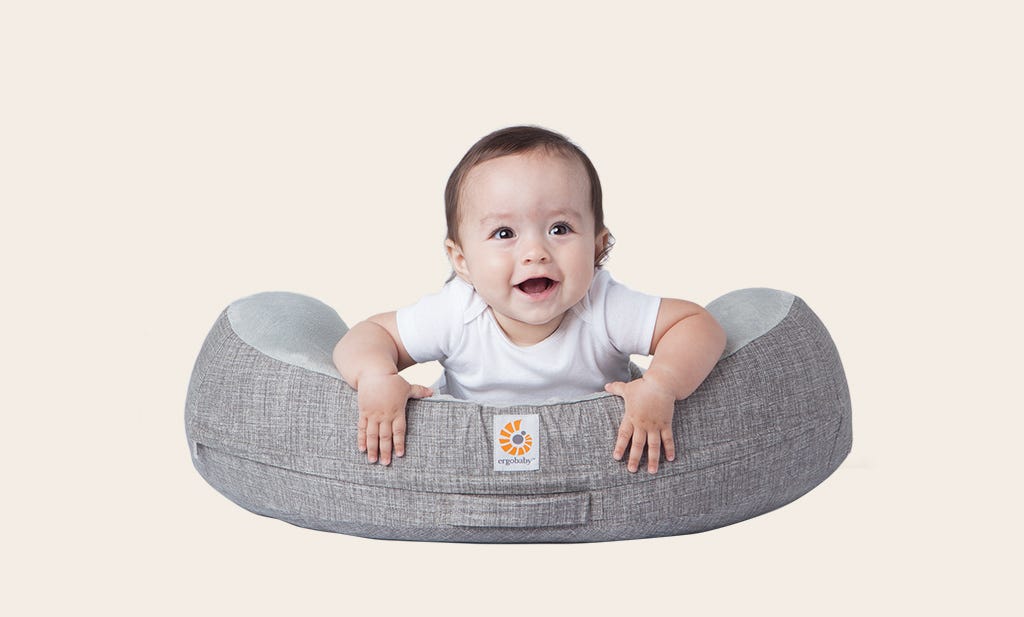
Parents of newborn babies are often nervous about placing their baby on their stomach. After all, your baby can't really hold its head up by itself yet so it’s understandable that when your little one starts to lie on their tummy, you want to quickly turn them onto their back.
And it’s no wonder if your baby grumbles at the start. The prone position or “tummy time” is not as easy for your baby at first because their head is so heavy. In addition, their spine is not yet erect in the double S-shape as it is in adults, and their hip joints are more forward so they can't lie down straight and have to work actively against this in the prone position. And sometimes they just don't feel like doing it.
What is the purpose of the prone position of a baby?
Even if the motivation is lacking, it is still important that your baby practices the prone position. The position adopted during tummy time has a great influence on your baby's motor development and has an incredible number of health benefits. It trains the neck muscles, reduces the risk of flat head syndrome, promotes digestion, uprightness, co-ordination, and strength, as well as balance and grasping. It can also relieve pain from flatulence which is worth its weight in gold! Our midwife and babywearing consultant Katrin Ritter encourages all parents to regularly turn your baby onto their tummy. However, it is important that you keep a few things in mind.

When to put the baby in the prone position?
Your baby's life outside your tummy begins in the prone position on your chest. Immediately after birth, your baby can crawl to your breast/chest to dock. Here it experiences closeness and security. You can build on this again and again - for example, with lots of little cuddle times especially with skin-to-skin contact, it all counts as tummy time!

How do I get my baby used to tummy time?
Does your baby have problems in the prone position, or do they grumble? Then try the flying hold first. Here your child lies on its stomach on your arm and has to hold its head. This can be a gentle introduction.
How can I support my baby in the prone position?
You can support your baby by using the so-called 3-step positioning. To do this, place a small towel or cloth nappy rolled diagonally from shoulder to pelvis under the belly. This way you shift the weight more to one side and make room for adjustment movements. For slightly larger babies, you can place a towel rolled into a "U" or use our Natural Curve nursing pillow under the torso so that your baby can put both arms over it.

How to practise the prone position with baby?
When putting your baby in the prone position again and again every day, your baby will start to develop interest and become fixated on new objects. Place toys such as a rattle or a grab ball close by to make tummy time more interesting.
Top tip: If your little one does not show interest in the tummy time and starts to cry, take them in your arms and try again later. Just remember, the more muscles your baby builds up and the better it can perceive its environment, the more it will love the this position.
How long should I put my baby in the prone position?
In the first eight weeks, 20 to 30 seconds several times a day will be plenty and then from about the third month, it can be several minutes, and from the sixth month, up to half the time baby is awake.
You can do it!
If you're in the "my baby doesn't like to lie on their stomach" group, keep going, you’ve got this! Offer your baby as many positions as possible, but don't force them to stay in one position. In general, besides the supine and prone positions, carrying your baby in a baby carrier can make up a large part of your baby's daily routine. Have fun practising!



















